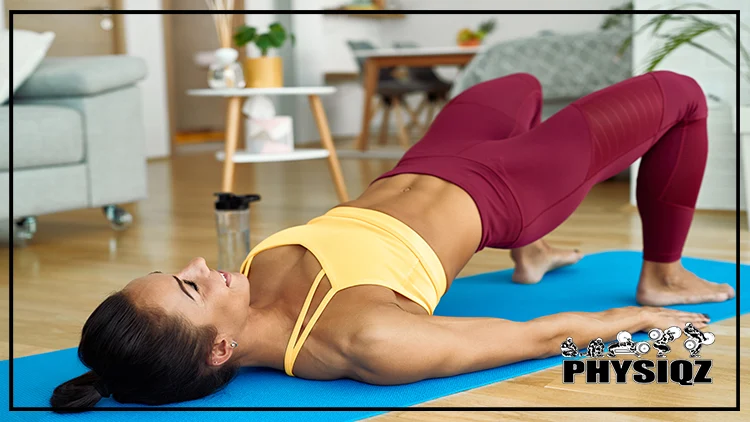
On an exercise such as the glute bridge, muscles worked obviously include the glutes, but there’s others muscles such as the core, hamstrings and lower back muscles that make this movement more versatile and beneficial than many first assume.1
So whether you’re looking to incorporate bridges for a bigger butt, or doing them for physical therapy, check out a full list of muscles worked in the glute bridge, before and after pictures of those who tried a glute bridge challenge, how to perform the glute bridge with perfect form (hint: keep a neutral spine) and all the variations (single leg, dumbbell, barbell etc.).
Glute Bridge: Muscles Worked & Targeted
Surprisingly the list of muscles used in a glute bridge exercise is more extensive than just the glutes. With the glute bridge, muscles worked are mainly in the lower body including the glutes, hamstrings, core, and back.
Gluteus Minimus & Gluteus Maximus (The Main Glute Bridge Muscles Worked)
The glutes, commonly informally known as the butt muscles are composed of 4 muscles the 2 largest being the gluteus minimus and gluteus maximus, then the smaller of the 4 are the gluteus medius and tensor fasciae latae. The glute muscles are responsible for stabilizing the body and helping with balance, running, and jumping.
Additionally, having strong glutes can help prevent knee injuries. The glutes are the primary muscle activated while doing the glute bridge and are targeted while moving the hips forward and bringing them back down to the ground.
Additionally, to get an extra burn in the glutes during this exercise a resistance band can be used around the knees.
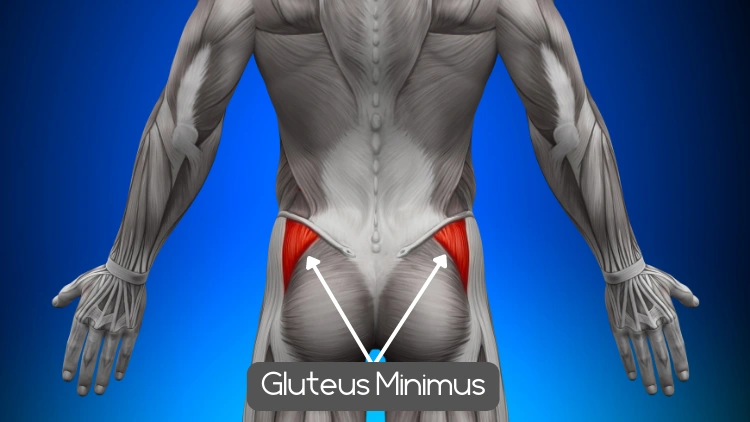
Source: decade3d via Canva.com2
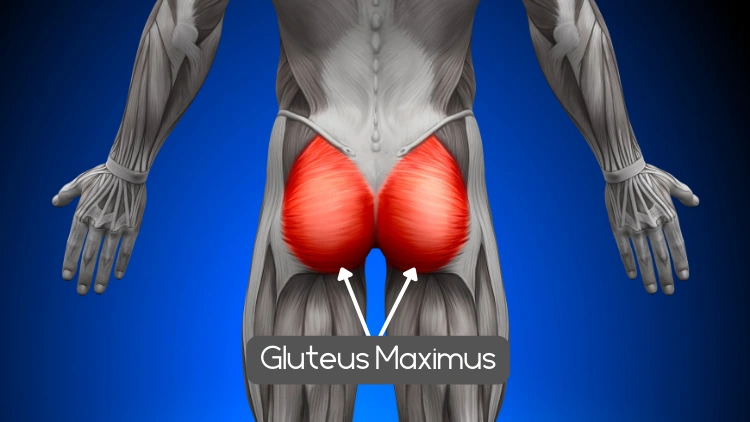
Source: decade3d via Canva.com3
Hamstrings
The hamstring muscles are found behind the leg between the knee and butt. These muscles are composed of 3 different muscles, the biceps femoris, semitendinosus, and semimembranosus.
Strong hamstrings can help prevent and limit lower back pain and knee pain. The hamstrings are also responsible for flexing the leg at the knee joint.
While doing glute bridges the hamstrings are activated while thrusting the hips forward and coming back down.
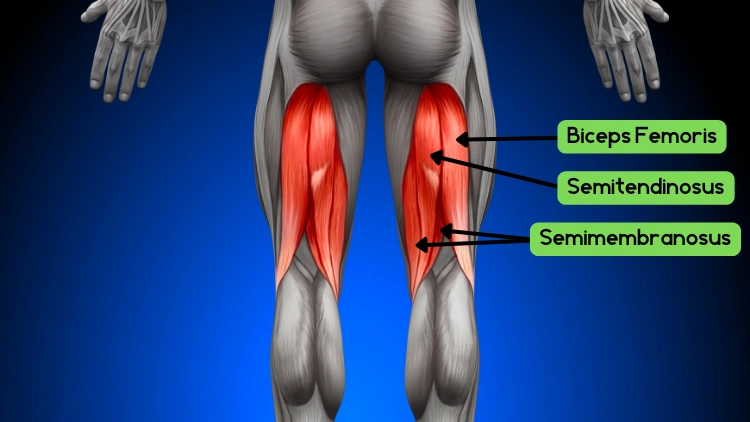
Source: decade3d via Canva.com4
Lower Back
The lower back is composed of 2 different large muscles, the erector spinae and latissimus dorsi. The erector spinae is the deepest muscle of the lower back and runs from the neck down to the butt.
The erector spinae is responsible for helping straighten the back and aids in rotating the back left and right. The latissimus dorsi is a very wide muscle that runs to the side of the body and down the back.
The latissimus dorsi is responsible for stabilizing the back.
Furthermore, the purpose of the lower back is to stabilize the body and is crucial in bending over and assisting with picking things up.
These lower back muscles are activated while doing glute bridges with each motion and are especially crucial in maintaining proper form. Keeping a straight, neutral back at the top of the glute bridge is important to prevent lower back injury as well.
Erector Spinae

Source: Hank Grebe via Canva.com5
Latissimus Dorsi
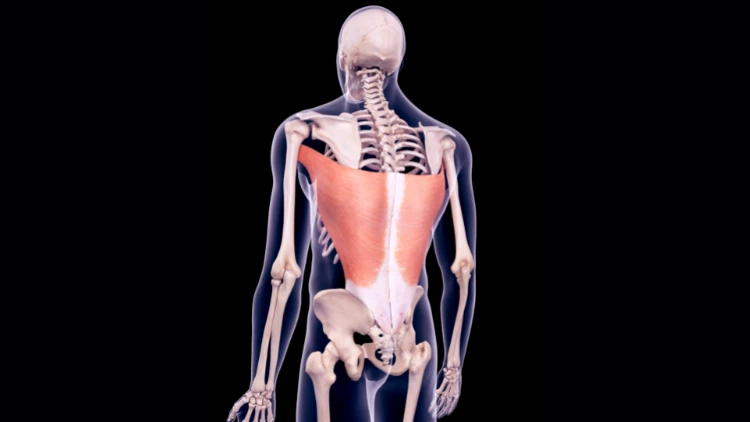
Source: Science Photo Library via Canva.com6
Core
The core muscles are composed of three different sections, the rectus abdominis, more commonly known as the “6-pack”, the internal and external obliques, or the side muscles. The core is crucial in balance, preventing back pain, and posture.
The core is very important while doing a glute bridge as having a strong, tight core helps the exerciser stay stable, and balanced, and prevents the lower back from being bent while performing the exercise. Additionally, research has shown that doing a single-leg glute bridge will engage the obliques the most.7
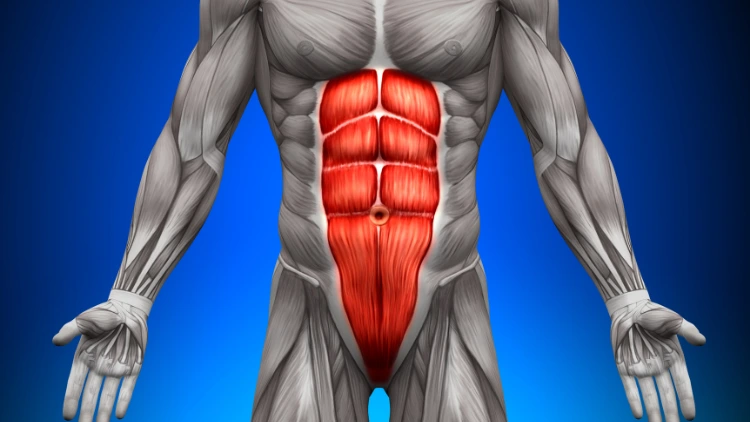
Source: decade3d via Canva.com8
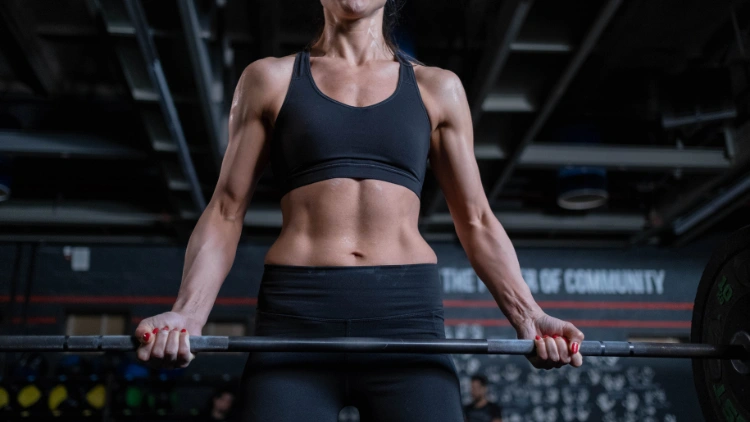
Source: cottonbro via Canva.com9
Glute Bridge Variations
Knowing what the muscles worked in glute bridge are, it can be helpful to have variations to do to target different muscles. These variations can be a great way to change the exercise routine to keep things exciting and fresh.
Single Leg Glute Bridge
The single-leg glute bridge can be a fantastic variation that will give the exerciser an intense glute and hamstring workout on one leg. Not to mention, since it works out one side, also known as a unilateral exercise, it’s great for those who have imbalances and a desire to address them.
This exercise can be done with weight and can also be done with body weight. Someone recovering from a knee injury can incorporate the single-leg glute bridge into their routine, along with various exercises to strengthen the knee after injury.
To target the hamstrings more while doing a single-leg glute bridge, one could adjust their knee angles from the typical 90° to 135° as this adjustment has been shown to increase activation of the hamstrings while still providing an effective glute workout. By doing single-leg glute bridges, the muscles will be activated more than using both legs together leading to a more intense exercise.
This can be a great exercise for those who are more advanced.
Barbell Glute Bridge vs Dumbbell Glute Bridge
Barbell glute bridges and dumbbell glute bridges are very similar exercises with the main difference being how the weight is being held. It may be easier for the exerciser to use a larger amount of weight with the barbell because of the way the weight is balanced on the bar whereas it may be more difficult to hold and balance a heavier dumbbell.
Additionally, some gyms, including home gyms may be limited in how heavy their dumbbells are. Ultimately, the barbell and dumbbell glute bridge will work out the same muscles so when deciding which to do it will come down to personal preference and which is most comfortable to do.
Barbell:
Dumbbell:
Elevated Glute Bridges
The elevated glute bridge offers a more advanced and challenging exercise. To do these, one will put their feet on an elevated surface such as a chair or bench and complete the same glute bridge movement.
Using the elevated surface will put a challenging spin on the glute bridge. The higher the foot surface is the more difficult it will be.
Tension Glute Bridges
Tension glute bridges are similar to normal glute bridges but offer a greater challenge. These are done by having a resistance band around the legs just above the knees.
By adding the resistance band, the glutes will get an extra burn. To ensure proper form while using a resistance band it’s important to always keep the band tight during the whole exercise and make sure there is no slack.
Weighted vs No Weight Glute Bridge: Muscles Worked
It’s possible to do a glute bridge with weight and without weight. Weighted glute bridges can be done with a dumbbell or barbell and will offer a more intense glute bridge workout.
A no-weight glute bridge is a fantastic option for beginners or those recovering from injury as this is a common exercise found in physical therapy rehab programs. Here are more exercises and stretches to strengthen and treat knee pain.
While the list of muscles worked in a bodyweight glute bridge is the same as the weighted one, the weighted glute bridge will be more intense and help one gain muscle quicker.
Weighted glute bridges:
No-weight glute bridges:
Benefits of Glute Bridges & Other Bridge Exercises (Bridge Exercise Benefits)
There are various benefits on why it would be beneficial to add glute bridges into a workout program. Here are the top 5 benefits of why it would be beneficial to add glute bridges to a workout plan.
- Building Muscle: The glute bridge can be a great option for building muscle, especially when using weight or increasing the number of reps if using body weight.
- Reduce Back Pain: Because this exercise builds the glute muscles and it has been shown that strong glutes and glute exercises have a positive impact on limiting chronic back pain, the glute bridge is a great exercise to add to a workout plan to help with back pain.11
- More Stabilization: The primary function of the glute muscles is stabilizing the body therefore, strengthening these muscles will improve the overall stabilizing of the body.
- Improved Balance and Strength: Research has shown that glute strengthening exercises has a significant impact on improving balance and lower back strength.12
- Help with Knee Pain: Having weak glute muscles or limited hip strength has been shown to have a positive correlation with knee pain.13 Improving the strength of the glutes and hips could be helpful to reduce ongoing knee pain.
Are Glute Bridges Good for Weight Loss?
Finding effective weight loss solutions can be challenging but incorporating glute bridges into a weight loss workout regimen can be beneficial. While glute bridges alone may not burn many calories compared to other cardio options listed for burning the most calories, they provide an effective means to build muscle.
A common issue individuals trying to lose weight encounter is experiencing increased body fat despite weight loss. Adding muscle-building exercises, such as the glute bridges, alongside cardio and diet changes can help strengthen muscles and lose body fat.
In conclusion, glute bridges will be effective to help aid in weight loss if used in conjunction with cardio workouts and diet changes.
Are Glute Bridges Good for Building the Glute Muscles?
Glute bridges can be good for building glute muscles if they are weighted or if they can be progressively overloaded since a progressive overload of reps and weight has been shown to be effective in building muscle over time.14 Moreover, incorporating glute bridges into a beginner hypertrophy program is highly recommended.
A similar exercise that can be utilized to build the glute muscles is the hip thrust. This will offer a more intense glute exercise.
Hip thrusts require a similar motion as the glute bridge but the exerciser’s lower back will be on an elevated surface such as a bench. By doing this, there is a greater range of motion that will in effect require the muscles to work harder.
Glute Bridge Before and After Pictures, Results, & Success Stories
Adding glute bridges into a workout routine has proven very successful in achieving stronger glutes and legs. Here are 2 stories of people who both did different types of glute bridge challenges and their before and after pictures and results.
Chloe’s Glute Bridge Challenge Before & After
Chloe embarked on a 30-day challenge where she did 100 body-weight glute bridges each day to see if she noticed any differences after 100 days. She measured her glutes at the biggest part on day 1 and was at 35 inches.

Chloe’s Glute Bridge Challenge brings visible gains in just 30 days. Source: Chloe Ting on Youtube15
After the 30-day challenge, she measured again and was at 36 inches. After only 30 days she was able to grow her glute muscles with the body-weight glute bridge.
Liana’s 300 Glute Bridge Challenge
Liana’s challenge was more intense each day but significantly shorter. She did 300 glute bridges each day for only 1 week.
She measured herself at the start of the week and was at 37 inches. At the end of the week, she was still at 37 inches.
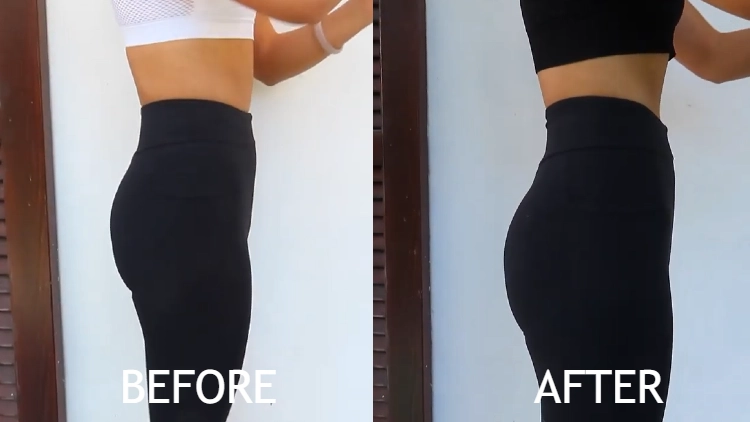
A Week of Intense Workouts Yields Unexpected Results. Source: from Liana with Love on Youtube16
This is a very interesting experiment that leads to the potential conclusion that although she worked out a significant amount of time during the week it will take a longer amount of time to see results.
How To Use Proper Form When Doing Glute Bridge Exercises
Proper glute bridge form is crucial to ensure the correct muscles are being targeted and to help prevent injury. Here is a step-by-step on how to make sure the glute bridge is done with perfect form!
1. Starting Position: To get started, the exerciser will lay on their back with their knees bent and feet shoulder-width apart. A common mistake people make is having their feet too close or too far away from the butt.
The feet are in the correct position if when laying down the tops of the fingertips can gently graze the heels.
- a. If Using Weight: Hold the dumbbell and gently place it on the top of the hips.
- b. If Using Resistance Band: While getting into the starting position place the resistance band around the legs just above the knees. The band needs to stay tight with no slack for the entirety of the exercise so make sure the legs and knees are continuing to push the band out and not let the band push the knees together.
2. Arm Positioning: The arms can lay relaxed on either side of the body with palms facing up or down, whichever is most comfortable.
3. Performing the Glute Bridge: The exerciser will lift their pelvis upwards until their lower body is aligned with the knees, pushing into their heels to help move the pelvis up. During this time, keep the glute and core muscles tightened. Having a strong core here is crucial to help prevent the back from bending which could lead to back pain or injury.
4. Completing Reps: Once the pelvis is aligned with the knees, hold the position for a few seconds, continuing to squeeze the glutes and keep the core engaged then slowly lower oneself back into the starting position. Continue this motion for as many reps as desired.
Some of the most common mistakes people make while doing the glute bridge are arching their back and not keeping a tight core. This mistake can put unnecessary strain on the back and can lead to back injury or pain.
An easy fit for this mistake is keeping the core engaged.
Tips to Feel Your Glutes When Doing Glute Bridges
There are a few important things to keep in mind while doing the glute bridge exercise to ensure the glutes are targeted. Here are some of the top tips.
- Foot Width: The feet should remain stationary and be shoulder-width apart for the entire exercise. If the feet are too wide or too close together, the glutes and hamstrings will not get the proper burn.
- Distance Feet Are From The Body: A common mistake people make is having their feet too close to the butt or too far away. A quick and easy tip to ensure the feet are in the correct position is when in the starting position the tips of the fingers should be able to graze the heels of the feet.
- Neutral, Straight Back: While pushing the hips upwards, it’s important to keep a ‘straight back’ and strong core for the entirety of the exercise. Otherwise it’s easy to tilt your hips forward and put the lower (lumbar) spine into flexion (rounding the wrong way or too flat), and this affects glute engagement while putting the spine in a disadvantageous position.
If the core is not engaged the entire time, the back will most likely bend, putting strain on the back and no longer properly engaging the glutes, hamstrings, or core. - Mind Muscle Connection: The mind-muscle connection could be a great tool for someone struggling to feel their glutes while doing a glute bridge or noticing this challenge for other exercises. By focusing the mind on the muscle wanting to be targeted, research has shown a greater activation of that muscle.17
Check out this video for a further explanation of mind muscle connection.
Upper/Lower Workout Program Incorporating Glute Bridges
It’s important to incorporate both upper and lower body workout days into a weekly workout program. Here is a sample week-long program incorporating glute bridges and including 2 off days.
Modify the reps, number of exercises per day, and rest days as needed. Also, check out this 6-day workout routine plan for anyone interested in giving it a go.
Day 1 (Monday) Lower Body Focus:
- Back Squat 3 sets of 10 reps
- Glute Bridge no weight 3 sets of 10 reps
- Elevated Glute Bridge 3 sets of 6 reps
Day 2 (Tuesday) Upper Body Focus:
- Bench Press 3 sets of 10 reps (see this for a powerlifting program including bench press pyramid)
- Push Ups and Sit Ups 2 sets of 10 reps of each exercise
Day 3 (Wednesday) Lower Body Focus:
- Front Squat 3 sets of 10 reps
- Single Leg Glute Bridge 3 sets of 10 reps on each leg
- Hip Thrust 3 sets of 8 reps
Day 4 (Thursday) Cardio:
- 30-45 minutes on the cardio machine of choice (Here is important information on the type of cardio machines that burns the most calories)
Day 5 (Friday) Lower Body Focus:
- Deadlifts 3 sets of 10 reps (hook grip vs mixed grip)
- Tension Glute Bridge 4 sets of 8 reps
- Weighted Glute Bridge 4 sets of 8 reps
Day 6 (Saturday) Rest Day
Day 7 (Sunday) Rest Day
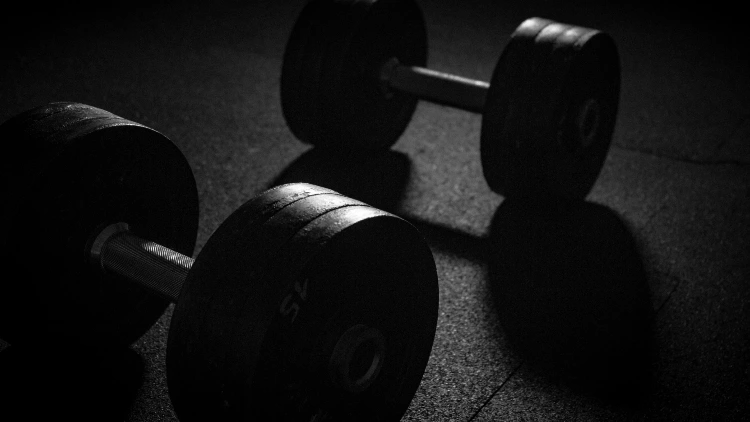
Source: Jonas_Fehre via Canva.com18
Glute bridges are an excellent exercise to add to a workout program because they are fairly easy to do and can be modified based on experience level. Lastly, with glute bridge, muscles worked and benefits are extensive.
Frequently Asked Questions
How Often Should I Do Glute Bridges To Gain Muscle?
Aiming to add glute bridges into a workout program between 2-3 times a week would be best for building muscle. It’s also important to note that to continue to see muscle growth, the weight would need to be added or intensity should be increased.
How Much Weight Should I Use as a Beginner?
For a true beginner, starting with bodyweight glute bridges would be best. As strength and confidence are gained, the exerciser could begin with a 10-pound dumbbell and slowly increase the weight as comfortable.
Glute Bridge vs Hip Thrust: What’s the Difference?
Hip thrusts require a similar motion as the glute bridge but the exerciser’s lower back will be on an elevated surface such as a bench. Due to this, there is a greater range of motion which requires the muscles to work harder compared to a glute bridge.
Are Squats or Glute Bridges Better Overall?
The glute bridge will specifically target the glute muscles greater than a squat as the squat activates all of the lower body muscles. Using both exercises would be the most effective way to build muscle.
References
1Zigic, Drazen. Freepik. Accessed 20 April 2023. <https://www.freepik.com/free-photo/young-athletic-woman-lifting-her-hips-while-doing-glute-bridge-exercise-floor-home_26144121.htm>
2decade3d. Canva. Accessed 20 April 2023. <https://www.canva.com/photos/MAC_U4VEw9o-glutes-medius-anatomy-muscles/>
3decade3d. Canva. Accessed 20 April 2023. <https://www.canva.com/photos/MADerAJvWMU-gluteus-maximus-anatomy-muscles/>
4decade3d. Canva. Accessed 20 April 2023. <https://www.canva.com/photos/MADerMxdfBI-hamstrings-anatomy-muscles/>
5Grebe, Hank. Canva. Accessed 20 April 2023. <https://www.canva.com/photos/MAD8-XkZ3xQ-male-erector-spinae-back-muscles-in-isolation-on-skeleton/>
6Science Photo Library. Canva. Accessed 20 April 2023. <https://www.canva.com/photos/MADq3vbyn-k-f017-1255/>
7Yoon, J.-O., Kang, M.-H., Kim, J.-S., & Oh, J.-S. (2018). Effect of modified bridge exercise on trunk muscle activity in healthy adults: a cross sectional study. Brazilian Journal of Physical Therapy, 22(2), 161-167. <https://www.ncbi.nlm.nih.gov/pmc/articles/PMC5883971/>
8decade3d. Canva. Accessed 20 April 2023. <https://www.canva.com/photos/MADerFwn3js-abs-anatomy-muscles/>
9cottonbro. Canva. Accessed 20 April 2023. <https://www.canva.com/photos/MAEc8WstTaI-woman-in-black-sportswear-lifting-a-barbell/>
10Lehecka, B. J., Edwards, M., Haverkamp, R., Martin, L., Porter, K., Thach, K., Sack, R. J., & Hakansson, N. A. (2017). BUILDING A BETTER GLUTEAL BRIDGE: ELECTROMYOGRAPHIC ANALYSIS OF HIP MUSCLE ACTIVITY DURING MODIFIED SINGLE-LEG BRIDGES. Int J Sports Phys Ther, 12(4), 543-549. <https://www.ncbi.nlm.nih.gov/pmc/articles/PMC5534144/>
11Kumar, T., Kumar, S., Nezamuddin, M., & Sharma, V. P. (2015). Efficacy of core muscle strengthening exercise in chronic low back pain patients. J Back Musculoskelet Rehabil, 28(4), 699-707. <https://pubmed.ncbi.nlm.nih.gov/25467999/>
12Jeong, U.-C., Sim, J.-H., Kim, C.-Y., Hwang-Bo, G., & Nam, C.-W. (2015). The effects of gluteus muscle strengthening exercise and lumbar stabilization exercise on lumbar muscle strength and balance in chronic low back pain patients. J Phys Ther Sci, 27(12), 3813-3816. <https://www.ncbi.nlm.nih.gov/pmc/articles/PMC4713798/>
13Cant, J. V., Pineux, C., Pitance, L., & Fiepel, V. (2014). HIP MUSCLE STRENGTH AND ENDURANCE IN FEMALES WITH PATELLOFEMORAL PAIN: A SYSTEMATIC REVIEW WITH META‐ANALYSIS. Int J Sports Phys Ther, 9(5), 564-582. <https://www.ncbi.nlm.nih.gov/pmc/articles/PMC4196322/>
14Peterson, M. D., Pistilli, E., Haff, G., Hoffman, E. P., & Gordon, P. M. (2011). Progression of volume load and muscular adaptation during resistance exercise. Eur J Appl Physiol, 111(6). <https://www.ncbi.nlm.nih.gov/pmc/articles/PMC4215195/>
15I Did 100 Bridges Everyday For 30 days | WORTH IT? BEFORE/AFTER RESULTS. YouTube, 18 December 2018, Accessed 30 March 2023. <https://www.youtube.com/watch?v=fyOYKwEwPGs>
16I did 300 bridges A DAY for 1 week RESULTS! //5 minute butt ‘transformation’ RESULTS. YouTube, 15 May 2020, Accessed 30 March 2023. <https://www.youtube.com/watch?v=bp4tLJBjwFk>
17Calatyud, J., Vinstrup, J., Jakobsen, M. D., Sundstrup, E., Colado, J. C., & Andersen, L. L. (2017). Mind-muscle connection training principle: influence of muscle strength and training experience during a pushing movement. Eur J Apple Physiol, 117(7), 1445-1452. <https://pubmed.ncbi.nlm.nih.gov/28500415/>
18Jonas_Fehre. Canva. Accessed 20 April 2023. <https://www.canva.com/photos/MADQ40DfbHM-dumbells-on-a-black-background/>